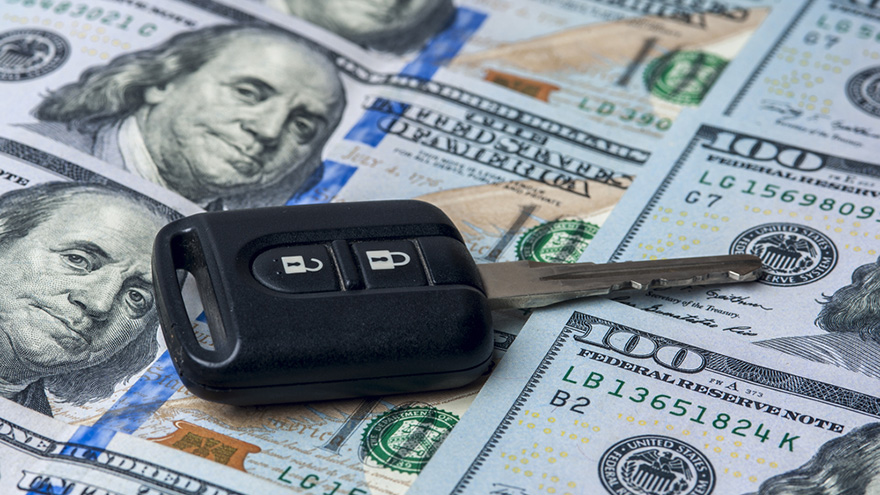More softening auto data as next Fed interest-rate decision nears

With the Federal Reserve on deck to announce its next decision involving interest rates on Wednesday, policymakers have softening trends percolating from the auto finance space to consider when deciding if another rate hike is merited to curb inflation.
Last week, S&P Global Ratings published the U.S. auto asset-backed securities (ABS) sector’s performance for July. Analysts spotted turbulence, especially within the subprime segment.
S&P Global Ratings highlighted a trio of findings, including:
—Performance continued to deteriorate for the month of July with prime and subprime annualized losses increasing and recoveries declining month-over-month and year-over-year. Additionally, prime losses are at par with pre-pandemic levels of 2019, and subprime losses exceeded pre-pandemic levels.
—Like in June, 60-day delinquencies rose to the highest ever July level in its composite for subprime and highest July level since 2011 for prime.
—In August, analysts lowered their expected cumulative net loss levels on eight U.S. and one Canadian ABS transactions. The U.S. transactions saw 35 upgrades and 21 affirmations, while the Canadian transaction saw affirmations on the two ‘AAA’ rated classes. There were no downgrades.
Then on Monday, Cox Automotive chief economist Jonathan Smoke reviewed more auto-finance data, which ironically was generated by the Federal Reserve.
In his latest commentary, Smoke said the Fed reported that consumer credit excluding housing-related debt saw growth decelerate in July to $10.40 billion from a downwardly revised $14.02 billion in June, driven by dramatically slowing growth in non-revolving debt.
“Non-revolving debt, which includes auto and student loans, increased by only $0.77 billion following a downwardly revised $14.89 billion increase in June. Revolving debt jumped by $9.6 billion, as credit card debt increased after falling slightly in June,” Smoke wrote.
Then Smoke got into the murky data specific to auto.
“Auto loan performance deteriorated in August, with delinquencies and defaults both increasing month over month. The 60-day delinquencies increased for the fourth month in a row and were up 14.6% year-over-year,” Smoke wrote.
“In August, 1.85% of auto loans were severely delinquent. That was up from July’s 1.77% rate and was the highest July rate dating back to at least 2006,” he continued. “The subprime loan delinquency rate was 7.17%, an increase from 6.90% in July and was the highest August rate dating back to at least 2006. The subprime severe delinquency rate was 79 basis points higher year over year, while the aggregate was 20 basis points higher.
“The delinquency rate has been high all year but has not been leading to a similarly high level of defaults. Defaults, however, increased in August after declining in July. Auto loan defaults in August were up 74.6% year over year,” Smoke went on to note.
Will auto be the key ingredient in what policymakers decide this week? Perhaps at least to a degree, based on the prediction made on Friday by Comerica Bank chief economist Bill Adams and senior economist Waran Bhahirethan.
Adams and Bhahirethan expect the Fed to hold the federal funds target unchanged at a range of 5.25% to 5.50% on Wednesday and signal the following decision on Nov. 1 will be “data dependent.” The bank experts explained their reasonings.
“The September edition of the Fed’s Summary of Economic Projections (aka Dot Plot) will likely upgrade the outlook for real GDP growth, lower the projection for unemployment, and raise the projection for PCE inflation in reflection of higher oil and gasoline prices after OPEC+ extended supply cuts in early September. Projections for core inflation may be modestly higher, too,” Adams and Bhahirethan said.
“The Dot Plot will likely signal a majority of members see a rate hike as appropriate at the following Fed decision on November 1, but that cuts are possible by mid-2024 if inflation slows as they expect. Chair Powell’s forward guidance at the press conference will likely reiterate the Fed’s resolve to ‘keep at it until the job is done,’ the closing line of his speech at Jackson Hole on Aug. 25 and a reference to the title of a book by Paul Volker, one of Powell’s role models,” Adams and Bhahirethan went on to say.


